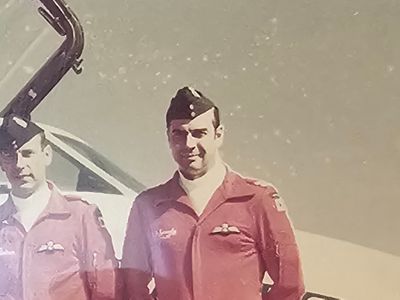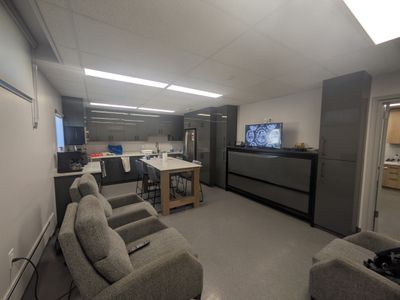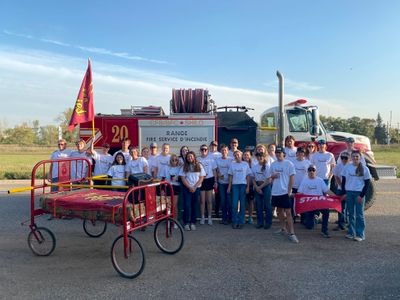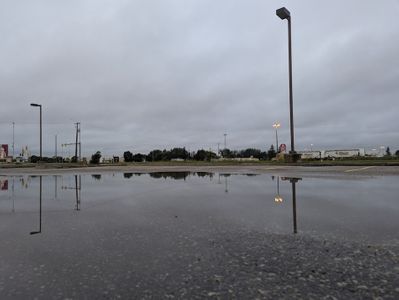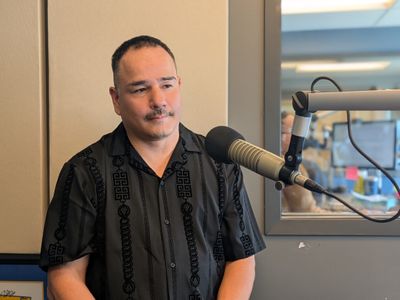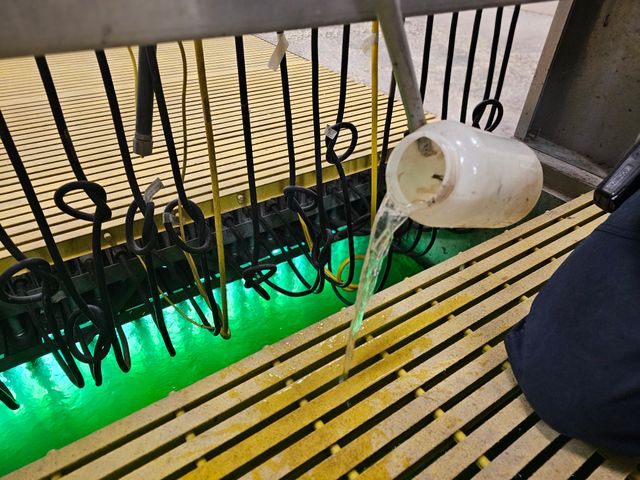Local News
From your home to the Assiniboine: Portage la Prairie’s wastewater team is ready
Walking through the Portage la Prairie Wastewater Pollution Control Facility, it’s clear that every flush and drain in town has a bigger story. Approximately 14,000,000 litres of wastewater — from homes, restaurants, and major industries like Roquette and McCain — move through the plant each day before being released as clean water back into the Assiniboine River. Each day begins with a morning meeting at 7 a.m., where crews meet and discuss the plans for the day, using information gathered by a recent upgrade - an automated monitoring and control system that lets workers see how the plant is doing at a glance. Balancing science and sludge For Wastewater Operator Brittany Woo, who has been with the city for eight years, the job blends science, environmental care, and plenty of teamwork. “You’ll notice a very big difference between the clean side and the dirty side,” she says with a laugh while walking through the plant. “For the most part, our job is to keep the bugs happy that are in there. We aerate them and then we let it settle. All the sludge settles to the bottom, and then on the top, you’re left with clean water that we put in the river.” The “bugs” Woo refers to are microorganisms that break down waste inside the plant’s sequencing batch reactors (SBRs). The reactors fill with wastewater, bubble with oxygen, and then settle out until clear water can be skimmed off the top. That water then goes through ultraviolet (UV) disinfection — hundreds of powerful bulbs sterilize any remaining bacteria before it heads back to the river. Turning waste into resources Beyond the treated water, the plant also makes use of the leftover solids. Woo says sludge is thickened, digested for nearly a month, and eventually spread on nearby farmland. “The sludge that comes from the bottom of the SBRs goes into the digester,” she explains. “What you’re left with is essentially like a perfect fertilizer. It’s full of nitrogen and phosphorus and all the things that farmers already want to apply to their fields.” She also pointed out that a great deal of flammable gases, such as methane, are also produced, and presently are dealt with by being pumped out and allowed to burn through a process called flaring. Woo notes that she also works with the Portage la Prairie Fire Department, and that they've received many calls from drivers, namely at night, who drive past and see the flame burning, not knowing what it is. For local producers, however, those byproducts contribute to healthier soil and stronger crops for years to come — an example of how wastewater management comes full circle in the community. Teamwork in the lab Inside the lab, technicians run daily tests on everything from suspended solids to oxygen demand. That’s where Aaron Stecheson, the city’s lab technician, helps monitor how well the treatment processes are working. Using microscopes, he and operators look for the right balance of microorganisms, an indicator of whether the “bugs” in the system are thriving. “The microorganisms that we look at are larger than the bacteria. They’re the indicator organisms, and they’ll tell you how healthy the bacteria are,” Stecheson explains. “It’s actually the bacteria that consume the waste in the water.” For Woo, splitting her time between the outdoor systems and the climate-controlled lab keeps the job varied. “Honestly, I get to spend most of my time outside, so that’s pretty fun for me,” she says. Challenges and misconceptions One of Woo’s biggest wishes is that people would be more mindful of what they flush, noting it would make her work a whole lot easier. “Nothing in this world besides toilet paper is flushable. Nothing,” she says firmly. “Baby wipes are not flushable. Feminine hygiene products are not flushable. Absolutely nothing besides toilet paper.” Every foreign object that makes its way into the system means extra work for crews and machinery that were never designed to handle it. Still, despite the occasional foul smell or clogged pump, Woo says she wouldn’t trade the work. Having moved from Toronto to Portage, she found a career that supports her love of the environment and gives her time for her hobbies, dogs, and life outside of work. “I’d say we do a pretty good job at what we do,” she says. “We strive to put out the cleanest water and make the best biosolids, and the farmers seem really happy.” From the first bar screen to the last UV lamp, Portage’s crew turns those 14,000,000 litres of what we flush into clean water for the Assiniboine—quiet, local science that keeps the city flowing. Sign up to get the latest local news headlines delivered directly to your inbox every afternoon. Send your news tips, story ideas, pictures, and videos to news@portageonline.com. PortageOnline encourages you to get your news directly from your trusted source by bookmarking this page and downloading the PortageOnline app.
